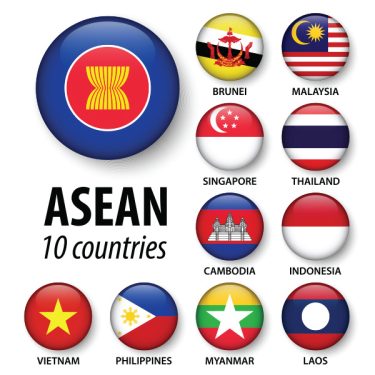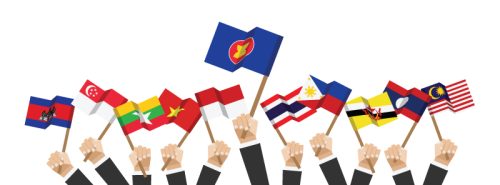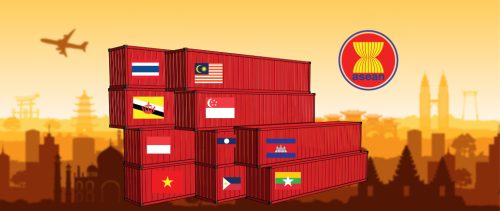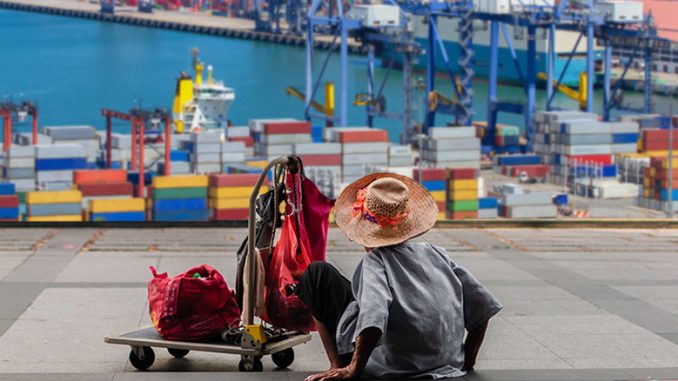
It has been generally acknowledged that international and regional trade agreements are one of the most significant features of international globalisation that lead to several more problems regarding international business transactions in the 21st century. Currently, there is evidence which proves that a group of developed countries tends to impose trade barriers against a group of developing countries such as by imposing higher tariffs (Van den Bossche, 2008). This obstacle would result in that one of the developed countries could take advantages of its trade partners and then it is able to increase trade barriers. In addition, the intense competition of international trade has been developed rapidly by technology and free trade investment which are the key accelerators. Particularly, a globalised economy or the free flow of trade investment has brought about the wide economic integration of many countries in the ASEAN. Hence, we cannot reject that international business transactions are easier to be carried out, but they are also more complex than in the past. All trade and e-commerce activities are growing dramatically. Consequently, the important question is what impacts can occur from the enhancement of international trade towards ASEAN and whether the international trade agreements have stimulated the trading equilibrium and reduced the disputes between any developing countries or not by using the perspective view of socio-legal approach for interpretation. There are agreements and organizations established to solve the problems caused by trade barriers in order to balance the momentum of international trade between countries and their overall economies. Thus, this article will concentrate on the perspective of the international and regional trade agreements that rely on socio-legal theory and also illustrate how international and regional trade agreements can enhance global well-being in ASEAN with examples provided.
If each country applies the same trading system based upon the Most-Favoured-Nation Principle (MFN) and National Treatment (NT), business transactions would be much easier, flowing smoothly and freely without discrimination (Freeman, 1994). As important as the backbone of a business since they are related to the standards of living, human well-being, technology, environment, unemployment, and health issues. The important thing is to reinforce the world’s economy so it becomes stronger. Nevertheless, even a slight increase in international trade has often led to many massive troubles regarding global trade barriers requiring WTO’s attention. The agreements regarding international trade would be beneficial to the world and bring more happiness to many people in the world. However, I have seen that only the majority of developing countries and the minority of developed countries can get benefits from joining in international and regional trade agreements (UNEP2019).
The Correlation Between WTO and RTA System International Trade Agreements
The World Trade Organisation (WTO) was set up to liberalise international trade on the principle of non-discrimination and to eliminate trade barriers through multilateral negotiations. The WTO rules on RTAs date back to GATT 1947 in Article XXIV of GATT, complemented by its understanding negotiated during the Uruguay Round. Article XXIV provides the legal foundation for RTAs in the area of trade in goods. For example, the reduction of tariffs on trade in goods among developing countries. WTO Members recognized that RTAs can play an important role in promoting trade liberalization and in fostering economic development, and stressed the demand for a harmonious relationship between the multilateral and regional system(Wankel, 2009).
Regarding the massive increase in international trade that has caused a lot of problems of trade discrimination, making an agreement could be the solution to this economic crisis. Nowadays, a lot of trade agreements have emerged from countries all over the world. It cannot be denied that the most influential international trade organization is the World Trade Organization (WTO). WTO was established in 1995 under the framework of the General Agreement on Tariffs and Trade (GATT). Global trade regulations were set and organized by this organization. This main principles of the WTO are not just only to profoundly reduce trade barriers among member states, but also to focus on improving the well-being of populations of the member states by launching particular trade agreements in order to support existing agreements (Punnett,2005).
To support the idea that international trade and regional trade agreements are able to improve global well-being among nations, first it must be recognized that international trade agreements are a pushing force to better “economic growth and free flow trade” because the core regulations tend to reduce trade barriers such as rules of non-discrimination, rules on market access, and rules on unfair-trade. For instance, one international trade rule is the Most Favoured Nation concept (MFN). According to this principle, when any member country has received a privilege in relation to export or import of commodities regardless of its categories, the exporting as well as the importing countries must adhere to the same principle, such a principle has an immediate effect and is without conditions. It can be well illustrated that the principle and the objective of the WTO are to enhance the effectiveness of the market mechanism and market access. This principle will reduce the trade discrimination. All members must conduct themselves in the same manner. After that, economic growth will improve global well-being such as an increase in economic growth that will lead to better prosperity of the global well-being in the individual perspective. Furthermore, there will be an increase in an individual’s standard of living and economic growth could lead to better income for the individual, which in turn would help to reduce poverty that has been faced by a large amount of the world’s population (VanGrasstek, 2013).
According to Adam Smith, economic growth is the result of an increase in human capital. First of all, the labour of the countries would become more productive. Other than that, when market mechanisms function effectively under international trade agreements, it implies that the competitors within the same market will be more competitive to provide a better quality of commodities. As a consequence, consumers will enjoy higher-quality products in an affordable and reasonable price range. Secondly, international trade agreements lead to environmental concerns. According to General Exceptions under GATT 1994 Article XX (b), XX (g):
Subject to the requirement that such measures are not applied in a manner which would constitute a means of arbitrary or unjustifiable discrimination between countries where the same conditions prevail, or a disguised restriction on international trade, nothing in this Agreement shall be construed to prevent the adoption or enforcement by any contracting party of measures: …
(b) necessary to protect human, animal or plant life or health…
(g) relating to the conservation of exhaustible natural resources if such measures are made effective in conjunction with restrictions on domestic production or consumption… .
An effective example of environment cases is GATT XX of Tuna-Dolphin case. This case was the dispute between Mexico and the US. Mexico planned to export tuna to the US. However, the US used article XX to reject import of Mexican tuna because of the method used by Mexican ships to catch tuna resulting in endangerment of the dolphin species.
As a lesson learned from this case, article XX allows the members to protect important societal values, such as environmental concerns. It can be seen that the exception of this article implies that if member countries act in such a way to protect the human, animal, or plant life or health, or to conserve exhaustible natural resources, they will be allowed to do so with the exception of GATT general rules. It means that the global environment might be protected from international agreements. In other words, this case illustrates that international trade agreements do not only concentrate on economic terms but are also aware of environmental issues arising during trade activity. Moreover, exporters of goods and services must be aware of the environmental impact of trade.
Regional Trade Agreements (RTAs)
Regional trade agreements (RTAs) began with a new international regional integration aspect. RTAs have become increasingly prevalent throughout the world since the early 1990s. In the WTO context, RTAs are joint agreements arising between two or more countries (WTO, 2015). Every state can join RTAs provided that conditions are met, regardless of whether it is a developed or developing country. The objective for ratifying RTAs is to enhance the ‘free flow trade area’ in the respective region, increase multilateral bargaining power, strengthen domestic policy reformation, and guarantee international trade market access (Fugazza and Nicita,2010). RTAs have been proven that their policies would not only propel economic development between member countries but also increase the prosperity.
Regional trade agreements (RTAs) have increased since the early 1990s in the presence of GATT/WTO. The Regional Trade Agreements (RTAs) are a major and perhaps irreversible feature of the multilateral trading system. RTAs represent an important exception to the WTO’s principle of non-discrimination. Hence, Countries within RTAs can trade among themselves using preferential tariffs and easier market access conditions than those applicable to other WTO regulations. If WTO member countries are not a part of the RTAs, they would lose out in the markets. There is a certain amount of apprehension about the role of regional trade agreements in WTO because WTO encouraged the growth of RTAs and believed that regional integration initiatives can complement the multilateral trade regime. However, the high proliferation of RTAs in global trade and increased diversion of trade through this trade is increasingly becoming a cause for concern for the multilateral trading system under WTO (WTO,2019).
For example, the North American Free Trade Agreement (NAFTA 1994), consisting of the US, Canada, and Mexico, is one of the RTAs that are very effective. It assists a small country in accessing a bigger market. RTAs demonstrate that there is an inequality between the US and Mexico. Mexico breaks into the US market and gains benefits from it, a large market. Mexico has obtained a huge amount of foreign direct investment. Mexico’s economy went up dramatically after 2001(Burfisher et al., 2001). On the other hand, the US did not gain any advantages from smaller countries, but it still gained benefits from being able to access a labour market that requires low wages and salaries. At the same time, Mexico could reduce the burden of unemployment rates (White, 1998). It has been acknowledged that RTAs are a tool to propel economic growth and development that supplements labours’ income and expand infrastructures. Thus, the improvement of RTAs would enhance global well-being as they reduce unemployment and stimulate business investment in the economy.
All in all, RTAs in WTO are shared agreements arising between two or more partners. Both developed and developing countries adopt RTAs to support the free flow of trade among the partners and reach the purpose to build the “free trade area”. RTAs have not only propelled the economics between partners but have also enhanced the global well-being. In addition, technology and knowledge have been transferred among partners. Regional trade agreements (RTAs) can be helpful tools in promoting growth. Also, RTAs structure trade in a way that can increase domestic productive capacity, promote upward harmonization of standards, improve institutions, reduce unemployment problems, stimulate further investment, introduce technical know-how into the domestic market and increase preferential access to desirable markets. These are outcomes that could be advantageous to developing economies in general and in particular the least developed countries and other low-income countries. However, most studies of regional integration agreements show that, on average, low-income countries benefit less. Thus, RTAs are economically good as they assist regional members to have better economies, and strengthen good relations between member countries. All of these imply an increase in global well-being (WTO, 2019).
AFTA – ASEAN Free Trade Agreement
Following the successful implementation of the AFTA, ASEAN was reinforcing efforts to build the AEC by 2015. The ASEAN Economic Community vision has four pillars firstly, a single market and production based on an integrated market and a supply chain network. Secondly, a competitive economic region related competition policy, intellectual property rights, infrastructure development. Thirdly, equitable economic development such as reduction of disparity within countries and across ASEAN. Finally, the integration into the global economy on economic integration with trade and FDI partners with ASEAN centrality. To become a single market and production base, The ASEAN Economic Community concentrated on core elements, for example, the free flow of goods, services, investment, and labor, and the free flow of capital. ASEAN economic integration started its internal economic integration process in 1993 when its original six members (Brunei Darussalam, Indonesia, Malaysia, Philippines, Singapore, and Thailand) launched the initiative to forge the AFTA. Then Vietnam in 1995, the Lao PDR and Myanmar in 1997, and Cambodia in 1999 respectively (Maria, 2017).
ASEAN is a unique region in terms of factor endowments, human capital development, technological capabilities, and productivity. The diversity is reflected in dissimilar export figures across member states. It includes large exporters of fuels and minerals (Brunei Darussalam, Indonesia, Malaysia, and Myanmar), agricultural products (Indonesia, Myanmar, and Vietnam), manufactured products (Cambodia, Malaysia, Philippines, Singapore, Thailand, and Vietnam), and commercial services (Philippines and Singapore). In other words, ASEAN is less diverse in terms of import patterns as all ASEAN member states import sizable amounts of manufactured products (Freund and Ornelas,2010).
In addition, under the ASEAN Free Trade Area (AFTA), the Common Effective Preferential Tariff (CEPT) regulation was implemented to require ASEAN member countries to use a tariff rate of 0%–5% on products originating within ASEAN. Only some countries were given additional time to implement the reduced tariff rates. The first pillar of the AEC was related to the free flow of goods within ASEAN, including tariff reductions, removal of nontariff barriers, rules of origin, trade facilitation, customs, standards and conformance, and sanitary and phytosanitary measures (Virág-Neumann, 2009).
Perspective of Socio-Legal Approach
Globalisation brings the free flow of trade investment, causing a wide economic integration throughout many countries in the world (Hodgeet al.,2013). WTO agreements and international organizations were founded in order to resolve problems caused by trade obstacles. International organizations provide international trade rules and regulations to gain momentum between two parties. One question is what can have a direct impact on people (Haugen and Mach ,2010). Those organizations also carry out dispute settlement within the circumstances with a socio-legal research approach. This is a reason why international and regional agreements would be beneficial to the whole world and lead to happiness for humankind (Matsushita et al.,2015).
To start with, the sociological perspective is a view of human behaviors in the 20th century. It concerns the outline of the relationship between individuals, relationships, and behaviors. This theory is one of the most important characteristics that has been applied to the law. Roscoe Pound was a leader who adapted his ideas to this theory. He believed that the nature of humanity was the essential need to live together in a society. His thought was very powerful in convincing other sociological jurist thinkers (Freeman, 2008). There were conflicts between people, because everyone has different needs, with differences of opinion (Friedman, 1986). Thus, some legal system was built up to handle conflicts in society. Besides, sociological methodology denies the idea of naturalism, which was a fundamental theory. It supposes that natural guides cannot deal with conflicts in the society due to the social structure. In other words, we can say that the core matter of the sociological jurisprudence is very difficult to be distinguished and specified, owing to when a controversial argumentation has occurred. Some matters are also reflected in legal thinking too. In 1964, Roscoe Pound passed away. More than sixty years later, his socio-legal ideas still influence people. Most scholars are stimulated by his works in the first third of the twentieth century. Furthermore, his works are also much more persuasive than the others such as those of Weber or Durkheim.
Jhering stated that law was an instrument for serving the need of humans in the society, which fulfilled their society so it could be run effectively (Freeman 2001). Pound was not only inspired by Jhering’s perspective, but also allocated his legal interest into three segments, namely social interest, individual interest, and public interest (Nalbandian, 2011). He explained that social interest related to security in economics and politics. On the other hand, individual interests were freedom, right, liberty, and public interest involved with the relationship in terms of public state and individual form (Nalbandian, 2011). He represented that the conflict of interest can be handled by imposing the law as a social implemental mechanism in order to treat legal practitioners like social engineers. Besides, he also believed that laws are requisite tools and provide important things in society (Freeman, 2008). This is a reason why, in order to make key points of his concepts merge and work, we have to generate and weigh the balance of interests and conciliate social obstacles in accordance with harmony.

How International and Regional Trade Agreements Can Enhance Well-Being in ASEAN?
International trade agreements indicate the increase in international trade that leads to international economic barriers, international trade discrimination, and others (Van den Bossche, 2008). The important area to be improved upon regarding the global well-being is to make an agreement to solve this crisis. Recently, many international trade agreements have occurred among countries throughout ASEAN. No one can dispute that the most powerful organization is WTO. In 1995, WTO was founded under the form of GATT in order to promote non-discrimination with a vision for stability and peace. International trade principles are imposed and enacted by WTO. The fundamental principle of the WTO is not only to decrease trade barriers but also to emphasize on enhancing the quality of human life among the members by operating international trade agreements (Van den Bossche, 2008 ).
It is commonly accepted that to improve the well-being among nations, both international trade, and regional trade agreements are very important. Both can propel a better economy ‘free flow trade generates economic growth’ based on two fundamental principles of WTO (Froning,2000). The Most Favoured Nation (MFN) and National Treatment (NT) have led to the relief of trade barriers in the form of non-discrimination treatment, regulation of anti-dumping, rules on unfair-trade, elimination of export subsidies, improving on market access. One of the foundations of the GATT/WTO system is the MFN principle which mandates that if a WTO member extends any benefit (such as reduction in tariffs) to a product of another WTO member, it must extend the same benefit to like products of all other members. WTO’s principles and objectives would lead to the strengthening of the effectiveness of market access (Fugazza and Nicita, 2010). This principle will help to reduce non-discrimination under WTO regulations (WTO, 2019).
In perspective views, I tend to think that economic growth will enhance global well-being. We can see that there are many developments in economic growth from the past until today (World Bank, 2015). Each country cannot produce every product to respond to their needs because each country has different resources. In order to get profit maximization, they must consider market mechanisms. For instance, people will be happy because of the quality of goods and reasonable prices. Then, as to economic growth, there will be an expansion of an individual’s standard of life, involving class disparity, quality of living, unemployment rates, inflation and deflation, decreased poverty, access to quality health care, improved infrastructure, political stability, and environmental quality, to name a few (Fontinelle, 2008).
The classical theory of economic growth is well-known among many. It was stated by Adam Smith, who was the father of economics. He believed that economic growth was the consequence of increased human capital (Paul, 2003). Apart from that, it can be assumed that many competitors in the same market would become competitive in tandem in order to provide a better quality of merchandise, given that market access and market mechanisms perform effectively under international trade agreements (Evenett and Hoekman ,2004).
WTO has an obligation to unblock an ‘inequitable multilateral trading system’ (Van-Grasstek, 2013). There are contradictions between the two sides. The first one concerns trade liberalization and the second one concerns human, animal, and plant life, and health and environmental issues. Some people believe that both things cannot go along together in the framework that resolves the controversy in global well-being (Gabiatti, 2009).
One of the best examples of human life or health cases is the Cigarettes case. The US brought this dispute to the dispute resolution process. Thailand used Article XX to reject US cigarettes because Thailand claimed that this product violated the Tobacco Act 1966 of Thailand, which was based on public health policy considerations. On the contrary, Thailand still allowed the production and sale of their cigarettes. Thailand argued that this measure was necessary to protect human life or health. The US’s chemical substance was more contaminated than the Thai counterpart. Thus, the working party concluded that restricted import such as that was an ‘unnecessary measure’ because Thailand could also still implement another measure instead of the one at hand (i.e. providing a less restrictive alternative) .
According to the above case, it is obvious that Article XX assists WTO in preventing important values and measures in terms of social values and ethical values more than individual values. It means that human life or health might be protected from potentially harmful international trade agreements. In this case, human bodies could be exposed to, for example, lung cancer. However, the defending state must have healthy evidence to prove that a product barred causes harm to human life. We can say the international trade agreements do not only consider the economic profit maximization of a company and the quality of products, but also human health (WTO, 2018).
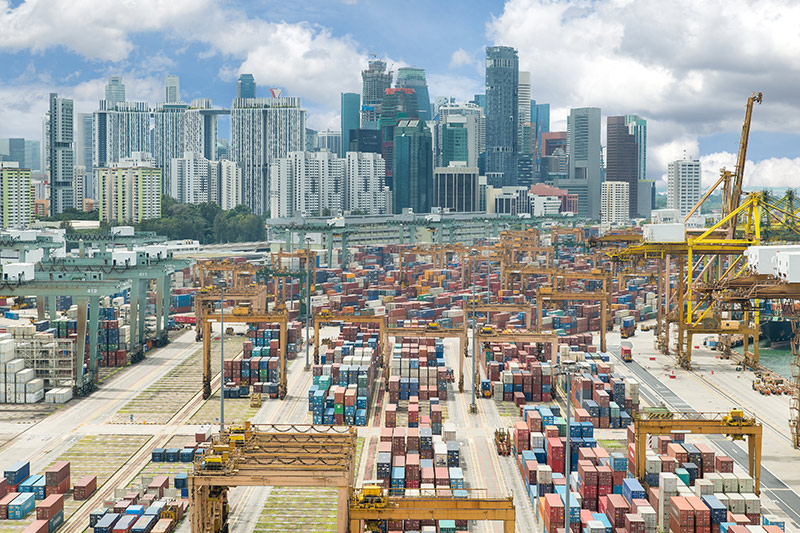
International and regional trade agreements are mechanisms that help drive the AEC economy, thereby enhancing ASEAN well-being. According to the sociological perspective given by Jhering, law does not only play an important role to serve the needs of humans in society, but also protect any causes that can be hazardous to human health, animal, and plant life within a nation. International and regional trade agreements can maintain the equilibrium between each country’s advantages and also stimulate economic growth and a free flow of trade investment. Furthermore, unemployment rates could be reduced dramatically, resulting in more superior standards. International trade agreements could also lead to the resolution of economic barriers. All of the above reasons only strengthen international and regional trade agreements as a means to enhance global well-being.
Conclusion
Taking everything into account, it can be assumed that an economically capitalized system is not sufficient to handle problems in international trade within ASEAN. Both agreements and some governing organization must be formed to balance and organize the interests among the nations. According to sociological jurisprudence, international and regional trade agreements are an instrument that balance state interests. Moreover, one function of these would be a mechanism to reconcile disputed nations and maintain international society. International trade agreements can motivate economic growth and free flow trade. Poverty may decrease and the living standards of people could increase. International trade agreements could also act as a mechanism to save and protect the environment within the nations. International trade activities would care about the environment. Widespread dissemination of technology and knowledge could improve the skills of labour for better productivity. All of these reasons reinforce the argument that international and regional trade agreements are meant to increase global well-being.
Siwarut Laikram
Former Lecturer of law, Department of General Education Office, Dusit Thani College,
E-mail: Laikramnaja@yahoo.com
Gina Margaret Summers
English Lecturer, Department of General Education Office, Dusit Thani College,
E-mail: gina.ma@dtc.ac.th
Bibliography
Books
Van den Bossche, P. (2008). The law and policy of the World Trade Organization: text, cases and materials. Cambridge University Press.
Freeman, M. D. (1994). Lloyd’s introduction to jurisprudence (Vol. 994). London: Sweet & Maxwell.
Matsushita, M., Schoenbaum, T. J., Mavroidis, P. C., & Hahn, M. (2015). The World Trade Organization: law, practice, and policy. Oxford University Press.
Encyclopedia
Wankel, C. (2009). Encyclopedia of Business in Today’s World: A-C (Vol. 1). Sage.
Journals and Articles
Burfisher, M. E., Robinson, S., & Thierfelder, K. (2001). The impact of NAFTA on the United States. Journal of Economic perspectives, 15(1), 125-144.
Evenett, S. J., & Hoekman, B. (2004). Government procurement: market access, transparency, and multilateral trade rules. The World Bank.
Friedman, L. M. (1986). The law and society movement. Stanford Law Review, 763-780.
Paul, J. R. (2003). Do International Trade Institutions Contribute to Economic Growth and Development. Va. J. Int’l L., 44, 285.
White, T. J. (1998). American participation in NAFTA: Economic incentives, influence, and domestic politics. International Journal on World Peace, 43-59.
Nalbandian, E. G. (2011). Sociological jurisprudence: Roscoe Pound’s discussion on legal interests and jural postulates. Mizan Law Review, 5(1), 141-149.
Maria, V. (2017). Regional trade agreements, integration and development.
Freund, C., & Ornelas, E. (2010). Regional trade agreements. Annu. Rev. Econ., 2(1), 139-166
Virág-Neumann, I. (2009). Regional Trade Agreements and the WTO. In 7th International Conference on Management, Enterprise and Benchmarking (pp. 5-6).
Other Sources
Froning, D. H. (2000)The Benefits of Free Trade: A Guide For Policymakers. Retrieved from: http://www.heritage.org/research/reports/2000/08.
Fontinelle, A. (2008).Standard Of Living Vs. Quality Of Life. Retrieved from:: http://www.investopedia.com/articles/financial-theory.
Fugazza, M. and Nicita, A. (2010).The Value of Preferential Market Access. Retrieved from:https://www.wto.org.
Hodge,H. N., Gorelick,S. and Page,J.(2013)The Economics of Happiness. Retrieved from: http://www.localfutures.org.
Punnett , B. J.( 2005).International Business. Retrieved from: http://www.referenceforbusiness.com/management/Gr-Int/International-Business.html.
United Nations Environment Programme (2019).Global Environment Outlook . Retrieved from:http://www.unep.org/geo/geo4/report/geo-4_report_full_en.pdf (Accessed: 4 December 2015).
Van Grasstek, C. (2013). The History and Future of the World Trade Organization. Retrieved from: https://www.wto.org/English.
World Bank ( 2015).Globalization and International Trade. Retrieved from:http://www.worldbank.org.
World Trade Organization (2019).10 things the WTO can do. Retrieved from:https://www.wto.org
World Trade Organization (2019).Article XX GATT 1947. Retrieved from: https://www.wto.org.
World Trade Organization (2019).Regional trade agreements (RTAs). Retrieved from:https://www.wto.org.
Dissertation
Gabiatti, S. (2009). Trade-Related Environmental Measures Under GATT Article XX (B) and (G) (Doctoral dissertation).


